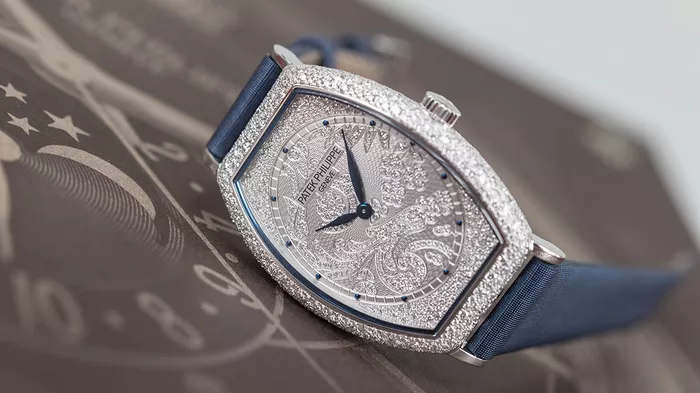Patek Philippe is synonymous with luxury, precision, and exceptional craftsmanship. Founded in 1839, this prestigious Swiss watch manufacturer has set the standard for high-end horology, producing some of the most sought-after timepieces in the world. The brand’s reputation for excellence is not only reflected in its meticulous designs and intricate complications but also in the limited number of watches produced each year. This article delves into the intricacies of Patek Philippe’s production numbers, the philosophy behind them, and the implications for collectors and enthusiasts.
A Legacy of Exclusivity
Patek Philippe’s commitment to exclusivity is evident in its production philosophy. Unlike many luxury brands that mass-produce watches to meet market demands, Patek Philippe focuses on craftsmanship and quality over quantity. The company produces approximately 50,000 to 60,000 watches annually. This figure may seem substantial compared to independent luxury brands, but it pales in comparison to mass-market watch producers.
The limited production is intentional and deeply rooted in the brand’s values. Patek Philippe believes that a watch is not merely a timekeeping device; it is a piece of art, a family heirloom, and an expression of personal identity. By limiting production, Patek Philippe ensures that each timepiece meets its exacting standards of quality, precision, and design.
The Production Process
Understanding how Patek Philippe achieves its exceptional quality begins with an insight into its production process. Each watch undergoes a rigorous manufacturing process that can take anywhere from several months to several years to complete, depending on the complexity of the timepiece.
Handcraftsmanship and Innovation
Patek Philippe employs a combination of traditional craftsmanship and modern technology in its production process. Each watch is assembled by highly skilled artisans who have undergone extensive training. These artisans are often tasked with multiple aspects of the watchmaking process, from hand-finishing movements to crafting intricate complications.
For example, the creation of a complicated movement, such as a perpetual calendar or minute repeater, involves over 500 individual components. Each piece is meticulously crafted and assembled, ensuring that the final product is not only functional but also aesthetically pleasing. The attention to detail is unparalleled; Patek Philippe is known for its “Côtes de Genève” finish, a distinctive decoration that enhances the beauty of the movement.
Rigorous Testing
After assembly, each watch undergoes a series of rigorous tests to ensure its accuracy and durability. These tests evaluate the watch’s performance under various conditions, including temperature fluctuations, moisture exposure, and magnetic fields. Patek Philippe adheres to strict standards, with each timepiece needing to pass a 1,000-hour quality control test before it is approved for sale. This meticulous attention to detail is one reason Patek Philippe watches retain their value over time and are often considered wise investments.
The Impact of Limited Production
The limited production numbers of Patek Philippe watches have far-reaching implications, particularly for collectors and enthusiasts.
Market Demand and Pricing
The rarity of Patek Philippe watches significantly impacts their market demand and pricing. With a limited number of pieces available each year, collectors often find themselves competing for the most coveted models. This competition can drive prices to astronomical levels, especially for iconic pieces such as the Nautilus and Calatrava.
Some models appreciate significantly over time, often becoming investments that yield substantial returns. For example, a Patek Philippe Nautilus that originally sold for $30,000 can fetch over $200,000 at auction years later. This dynamic is fueled by the brand’s legacy and the recognition of its watches as symbols of status and success.
The Role of Collectors
Patek Philippe has cultivated a dedicated community of collectors, many of whom have a profound appreciation for the brand’s history and craftsmanship. The limited production of watches means that collectors often invest not only in the pieces themselves but also in the stories and heritage associated with them.
The Patek Philippe Museum in Geneva serves as a testament to this legacy, housing a vast collection of historical timepieces and artifacts related to the brand. The museum attracts enthusiasts from around the world, further solidifying Patek Philippe’s status as a leader in horology. Collectors often engage in conversations about their experiences, the history of specific models, and the technical advancements the brand has achieved over the years.
The Future of Patek Philippe Production
As the luxury watch market continues to evolve, Patek Philippe remains committed to its philosophy of exclusivity and craftsmanship. The brand has seen significant growth in recent years, particularly in emerging markets. However, the management has made it clear that it will not compromise on its production numbers or quality to meet demand.
Sustainable Growth
Patek Philippe recognizes the importance of sustainable growth in the luxury watch industry. The company is actively investing in new technologies and processes to enhance efficiency without sacrificing the quality that defines its timepieces. For example, advancements in CNC machining have allowed the brand to produce components with greater precision while reducing production time.
Additionally, Patek Philippe is increasingly focusing on sustainability and ethical sourcing of materials. The brand has implemented measures to ensure that the gold and other precious materials used in its watches are sourced responsibly, reflecting a growing trend in the luxury industry.
See Also Why Is Nautilus So Expensive
Conclusion
Patek Philippe’s limited annual production of approximately 50,000 to 60,000 watches underscores the brand’s commitment to quality, craftsmanship, and exclusivity. Each timepiece is a testament to the company’s rich history and dedication to horological excellence.
As the demand for luxury watches continues to grow, Patek Philippe’s focus on limited production ensures that its watches remain coveted pieces for collectors and enthusiasts alike. The brand’s legacy is not merely about producing timepieces; it is about creating lasting value and preserving the artistry of watchmaking for future generations.
For those who appreciate the finer things in life, owning a Patek Philippe is not just about the watch itself; it’s about being part of a tradition that transcends time—a legacy that will continue to captivate hearts and minds for generations to come.
You Might Be Interested In

